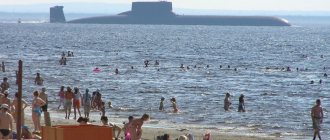City in Tula region, Russia
| Bolokhovo Bolokhovo | |
| City [1] | |
| 2016 | |
| Flag Coat of arms | |
| Location of Bolokhovo | |
| Bolokhovo Location of Bolokhovo Show map of Russia Bolokhovo Bolokhovo (Tula region) Show map of Tula region | |
| Coordinates: 54°05'N 37°50'E / 54.083°N Latitude 37.833°E / 54,083; 37.833 Coordinates: 54°05'N 37°50'E. / 54.083°N 37.833°E / 54.083; 37.833 | |
| A country | Russia |
| Federal subject | Tula region [1] |
| Administrative region | Kireevsky district [1] |
| City of district subordination | Bolokhovo [2] |
| City status from | 1943 |
| Height | 210 m (690 ft) |
| population size (2010 Census) [3] | |
| • General | 9 622 |
| • Evaluate (2018) [4] | 9 043 ( -6% ) |
| Administrative status | |
| • Capital from | City of Bolokhovo district subordination [1] |
| Municipal status | |
| • Municipal district | Kireyevsky municipal district [5] |
| • Urban village | Urban settlement Bolokhovo [5] |
| • Capital from | Urban settlement Bolokhovo [5] |
| Timezone | UTC+3 (MSK[6]) |
| Postal code [7] | 301280 |
| OKTMO ID | 70628108001 |
Bolokhovo
(Russian: Bolokhovo) is a city in the Kireyevsky District of Tula Oblast, Russia, located on the Olen River (Oka's basin), 20 km (12 mi) southeast of Tula, the administrative center of the region. Population: 9,622 (2010 census); [3] 10,364 (2002 census); [8] 11,787 people (1989 census). [9]
Chronicle mentions
Bolokhov, according to historians, was located in the lands of the upper reaches of the Southern Bug, in the basins of the Goryn River with its tributary Sluch and the Teterev River. This follows from mentions of him in the Galician-Volyn Chronicle of the 13th century[2]. The very first is associated with the year 1150, when Vladimirko, Prince of Galicia, walked from Galich to Kiev through Bolokhov: “and news came to Izyaslav that Volodimirko had crossed Bolokhov, to go past Munarev to Volodarev.” The second mention dates back to 1170, when Mstislav II fled from Kyiv to Vladimir Volynsky through Bolokhov. The third mention occurs in 1231, the fourth, regarding the attack of Daniil of Galicia, in 1241, and finally, the last in 1257[3].
The city of Bolokhov is also mentioned in the Kyiv Chronicle. It tells about the war of 1150 for the Kiev grand-ducal table between Izyaslav Mstislavich and his uncle Yuri Dolgoruky[2].
Sights of the city of Bolokhovo (Tula region)
We continue our journey through small towns.
Today we will talk about Bolokhov, Tula region. In Soviet times, it was one of the centers of the coal mining industry. Now they make equipment for trains and chandeliers with Swarovski crystals. Report by Valentina Vasileva. Bolokhovo is perfect for filming a film about the post-war years. Snow-white city sculptures, a stadium with the inscription “Labor”, hand-painted shop signs and the main architectural attraction - the cultural center in the Stalinist Empire style. It was built in 1943 for... miners. For almost the entire first half of the 20th century, Bolokhovo was one of the centers of the Soviet coal mining industry. There were 26 mines in its vicinity.
Vladimir Arsentievich worked at the Bolokhov mines for 20 years. And this is only part of his long work biography. After the house burned down in 1943, and his father, also a miner, died in a mine, he had to take care of the family himself. As a young man, he worked as an excavator operator, a combine operator, a shepherd, and a digger.
Vladimir Arsentievich, resident of Bolokhov: “From the age of 13, everything is in work and in work. And he guarded the calves, and everything had to be done. Oh, how I remember. Childhood flew by, and I didn’t even see it fly by. Now my wife is sick, she hardly walks around, and now I’m alone in the house... You plant potatoes there; you used to plant them behind the house, but now they’re just in the garden.”
At the mine, Vladimir Arsentievich earned medals and... chondrosis - his arms and back hurt, his vision is poor. One thing saves - the button accordion.
Vladimir Arsentievich can play the button accordion endlessly. I am glad to suddenly have listeners. Previously, miners who lived in neighboring houses could appreciate his skill. Now there is almost no one left - only he and Vasily Ilyich.
Vasily Ilyich, resident of Bolokhov: “We are at mine No. 20, where on September 25, 1948, one of the worst tragedies in the Soviet Union occurred. When 56 miners died from a fire...".
When the accident happened, Vasily Ilyich was 12 years old. He saw how the bodies of the dead were taken out. Despite this, years later, he himself went to work in the mine. And the coal underworld did not spare him either - the train cut off his hand. Vasily Ilyich became disabled at the age of 25.
Vasily Ilyich, resident of Bolokhov: “The miners don’t have such a great life... Meager pensions. I have 9,500 rubles, because I didn’t have enough experience. But again, I’m grateful that they give me free coal from the mine.”
Now Vasily Ilyich is caring for the grave of the martyred miners. All 54 people who died in the terrible accident of 1948 are buried here. With one hand he removes garbage, keeps things clean, and prays. He says this is the only mass grave of miners in Russia.
Vasily Ilyich, resident of Bolokhov: “When you come here, you get peace of mind. If I go for good deeds, then I ask my grandmother Praskovya Ustinovna - she was such a believer - and the martyred miners, I turn to them, and everything always comes true.”
In the 60s, the mines in Bolokhov closed, and mechanical engineering began to develop in the city. One of the most striking enterprises was the plant for the production of electric heaters of the All-Russian Society of the Blind. The area in which it was located is still called a city within a city by locals. More than 200 blind people lived and worked in houses near the plant.
In 2002, the company was sold, and employees were offered to commute from Bolokhov to Tula. Few agreed. Most disabled people were left without their favorite job and salary.
Today, on the basis of the plant of the All-Russian Society of the Blind, there is one of the largest production of heating and air conditioning for electric trains in Russia. Bolokhov equipment was supplied to electric trains at the Olympics in Sochi and the Universiade in Kazan. And a year ago, a new production facility was opened here, completely unusual for the city. We decided to make chandeliers from Swarovski crystals.
Notes
- Dashkevich N.
Bolokhov land and its significance in Russian history. K., 1876. - ↑ 1 2 M. F. Kotlyar
[www.history.org.ua/index.php?termin=Bolokhov Bolokhov] // Encyclopedia of Ukrainian History: 10 volumes / editor: V. A. Smoliy (head) and in . ; Institute of History of Ukraine NAS of Ukraine. - K.: Science. Dumka, 2003. - T. 1: A - V. - 688 pp.: ill. — ISBN 966-00-0734-5. - Rudakov V. E.
Bolokhov land // Encyclopedic Dictionary of Brockhaus and Efron: in 86 volumes (82 volumes and 4 additional). - St. Petersburg, 1890-1907. - Tereshchuk K. I.
Before we learn about the localization of Bolokhiv land. In the book: Research from the words of Yanorussian archaeology. K., 1976.
When writing this article, we used material from the article “[www.history.org.ua/index.php?termin=Bolokhov Bolokhov]” (author M. F. Kotlyar) from the publication “Encyclopedia of the History of Ukraine”, available under a Creative Commons license [creativecommons .org/licenses/by-sa/3.0/deed.ru BY-SA 3.0 Unported].
An excerpt characterizing Bolokhov (city)
Princess Marya stopped on the terrace. The day had cleared up, it was sunny and hot. She could not understand anything, think about anything and feel anything except her passionate love for her father, a love that, it seemed to her, she did not know until that moment. She ran out into the garden and, sobbing, ran down to the pond along the young linden paths planted by Prince Andrei. - Yes... I... I... I. I wanted him dead. Yes, I wanted it to end soon... I wanted to calm down... But what will happen to me? “What do I need peace of mind when he’s gone,” Princess Marya muttered aloud, walking quickly through the garden and pressing her hands on her chest, from which sobs were convulsively escaping. Walking around the garden in a circle that led her back to the house, she saw M lle Bourienne (who remained in Bogucharovo and did not want to leave) and an unfamiliar man coming towards her. This was the leader of the district, who himself came to the princess in order to present to her the necessity of an early departure. Princess Marya listened and did not understand him; she led him into the house, invited him to have breakfast and sat down with him. Then, apologizing to the leader, she went to the door of the old prince. The doctor with an alarmed face came out to her and said that it was impossible. - Go, princess, go, go! Princess Marya went back into the garden and sat down on the grass under the mountain near the pond, in a place where no one could see. She didn't know how long she was there. Someone's running female steps along the path made her wake up. She got up and saw that Dunyasha, her maid, who was obviously running after her, suddenly, as if frightened by the sight of her young lady, stopped. “Please, Princess... Prince...” Dunyasha said in a broken voice. “Now, I’m coming, I’m coming,” the princess spoke hastily, not giving Dunyasha time to finish what she had to say, and, trying not to see Dunyasha, she ran to the house. “Princess, God’s will is being done, you must be ready for anything,” said the leader, meeting her at the front door.
The ghost town of Bolokhovo smells of bread and damp forest
“Transport in our city is also a big problem for those who need to go to work,” added the second woman. “Every morning, with the exception of the summer season, you have to fight for a minibus. There is little transport in the morning, but there are a lot of people in the city. We have to survive every morning in this battle. At the moment, they have set up a ticket office where you need to buy tickets, so far there have been no such problems, but it’s not autumn yet.”
And the last “nail” in the lid is the roads.
The roads in Bolokhovo are the worst in the Kireyevsky district. Tested for myself.
“I have lived here for more than 6 years. There have always been terrible roads here,” Eva Abashina, a 25-year-old girl, tells us. — For the last 2 years, repair work has been underway at the entrance to the city; a year ago, asphalt was laid on several main streets. And this summer, asphalt is even being laid for pedestrians. In the courtyards, unfortunately, the situation does not change - all roads are destroyed. At the entrance to Bolokhovo, too, you can feel it in the truest sense of the word. When it rains, all your shoes are covered in mud, you have to jump, in winter there is solid ice, only some streets are sprinkled with sand.”
On the road to the Bolokhovsky bakery, they dug up the roadsides - apparently, they will lay a curb stone. In general, in some places in the city, brand new sidewalks “stick out” from the general landscape. They look like an oxymoron against the backdrop of a neglected park, or a broken-down road, or a ruined uninhabited building. But these paths are fresh, smooth, made of good asphalt. It’s as if they “fell” here from some other city. A kind of pinpoint grotesque improvement amid general desolation.
Where is the administration?
An unprepared person will not immediately find the place where the Bolokhov administration and the Assembly of Deputies are located - it’s just a couple of rooms in a typical five-story building with a separate entrance and red signs. But the city leadership is as close as possible to the people. The door opens into a cozy courtyard with sand and a children's playground, as well as benches - in good weather you can hold a parliamentary meeting here.
A half-dead - half-alive city, like this five-story building in Bolokhov Energy, half-built and ruined. People still live here. And they give birth to children. And they bake delicious bread. But the eerie ruins of abandoned houses, like ulcers, densely dotted the city and with their ominous appearance remind us that their turn will soon come. And everything will turn to dust.
The city of Bolokhovo, Kireevsky district, Tula region, was once a young mining workers’ village, which had everything for people’s lives. Today this city is the most depressing of all in the area. Local residents complain about the condition of roads, devastation in housing and communal services, a shortage of transport and cultural hunger. A small sports and recreation complex is about to be completed. Well, it’s like a complex – a small building with a gym. Young people have nothing to do in the city - the most energetic ones study and work in Tula or Moscow. Our photo report is about balancing on the brink of life and extinction of a once thriving mining town.
Angelika Minaeva, “Moskovsky Komsomolets in Tula” Photo by the author






